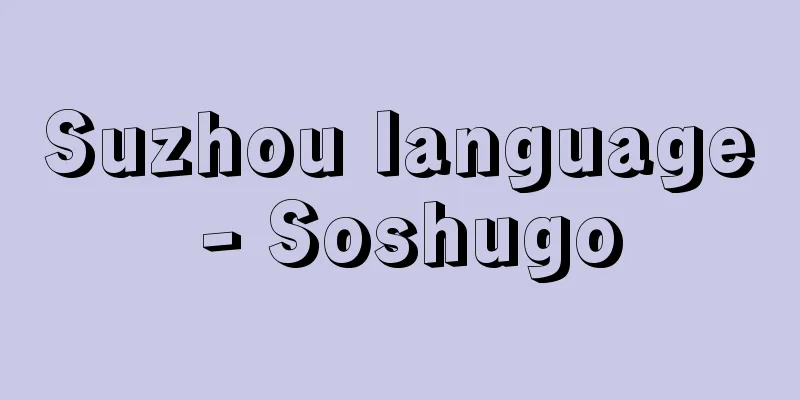Suzhou language - Soshugo

|
The group of Chinese dialects (Suzhou, Shanghai, Changzhou, Wuxi, Ningbo, Shaoxing, etc.) found in the area occupying the eastern half of Jiangsu Province and most of the northeastern part of Zhejiang Province in China are called Wu language (Wu dialect). It is spoken by an estimated 46 million people, with Suzhou language forming the core of the language. In Chinese, it is called Suzhou dialect. During the Spring and Autumn period (6th to 5th century BC), King Fuchai of Wu was defeated by King Goujian of Yue, and Wu and Yue merged, and the locations of these two countries roughly correspond to the present-day Wu language area. The Wu-Yue language later came into contact with the Chu language, and is said to have formed a unique major dialect in this region. Source: Heibonsha World Encyclopedia, 2nd Edition Information |
|
中国,江蘇省東半と浙江省北東部大半を占める地域に分布する中国語の方言群(蘇州,上海,常州,無錫(むしやく),寧波(ニンポー),紹興方言など)を呉語(呉方言)と呼ぶ。使用人口は推定4600万人,蘇州語はその中核をなす。中国語では蘇州話という。春秋時代(前6~前5世紀),呉王夫差が越王句践に滅ぼされ呉越が合併するが,この両国の位置が現在の呉語地区とほぼ一致する。呉越の言葉はその後,楚の言葉と接触し,この地域に独特の一大方言を形成したとされる。
出典 株式会社平凡社世界大百科事典 第2版について 情報 |
Recommend
Kannazuki
Another name for the tenth month of the lunar cal...
Cetane
C 16 H 34 (226.45). CH 3 (CH 2 ) 14 CH 3 . It is ...
Credit creation - English
This refers to banks creating credit money and le...
Fremdenverkehr
…The word tourism began to be used in the UK at t...
business finance
…To carry out its activities, a company must rais...
Paspalum scrobiculatum (English name)Paspalum scrobiculatum
…[Tetsuo Koyama]. … *Some of the terminology that...
Amurrus
A nomadic people of Western Semitic origin, origin...
Descemet's membrane
…the cornea contains many nerve fibers, but no bl...
Chuncheon
A city in the western part of Gangwon Province, S...
Oriental poppy
...It does not like to be transplanted, so it is ...
Exorcism
...The doctrine that the devil is a personal expr...
Kilian, G.
…There have been attempts to systematically under...
Substitute Zen Meditation
Kabuki dance piece. A dialogue between Tokiwazu an...
Kyansittha (English spelling)
1040‐1113 The third king of the Pagan dynasty in M...
Stapelia gigantea (English spelling) Stapelia gigantea
… [Hiroshi Yuasa]. … *Some of the terminology tha...









